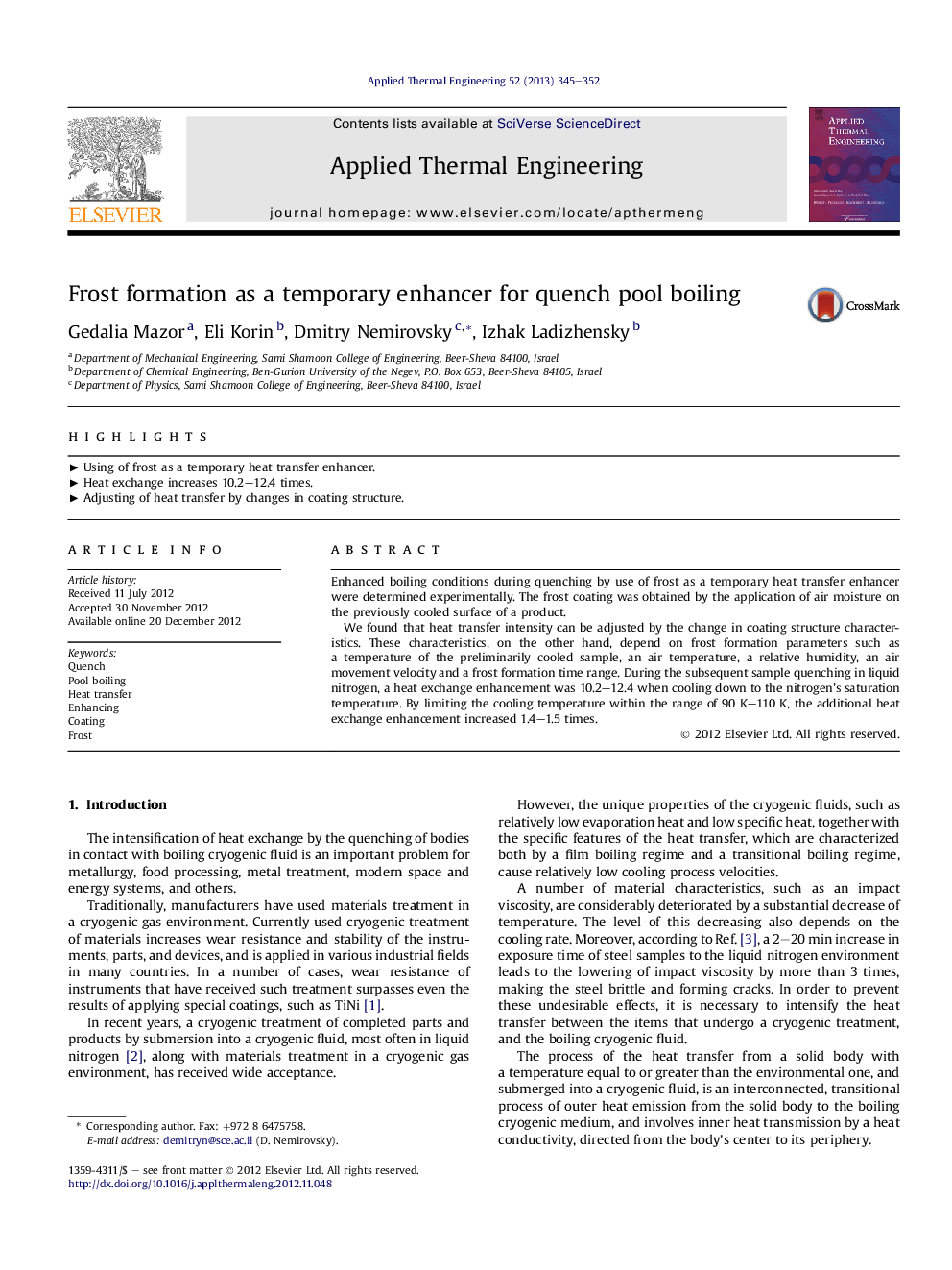| Article ID | Journal | Published Year | Pages | File Type |
|---|---|---|---|---|
| 646985 | Applied Thermal Engineering | 2013 | 8 Pages |
Enhanced boiling conditions during quenching by use of frost as a temporary heat transfer enhancer were determined experimentally. The frost coating was obtained by the application of air moisture on the previously cooled surface of a product.We found that heat transfer intensity can be adjusted by the change in coating structure characteristics. These characteristics, on the other hand, depend on frost formation parameters such as a temperature of the preliminarily cooled sample, an air temperature, a relative humidity, an air movement velocity and a frost formation time range. During the subsequent sample quenching in liquid nitrogen, a heat exchange enhancement was 10.2–12.4 when cooling down to the nitrogen's saturation temperature. By limiting the cooling temperature within the range of 90 K–110 K, the additional heat exchange enhancement increased 1.4–1.5 times.
► Using of frost as a temporary heat transfer enhancer. ► Heat exchange increases 10.2–12.4 times. ► Adjusting of heat transfer by changes in coating structure.
